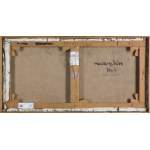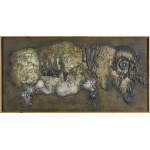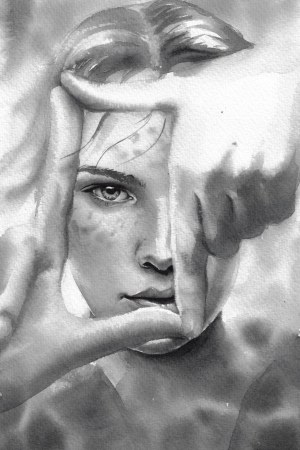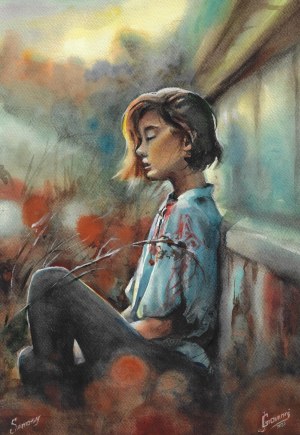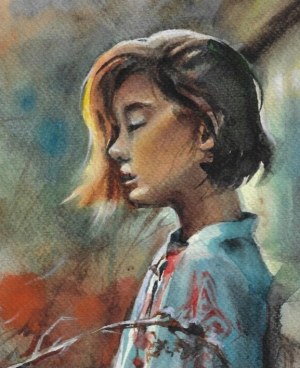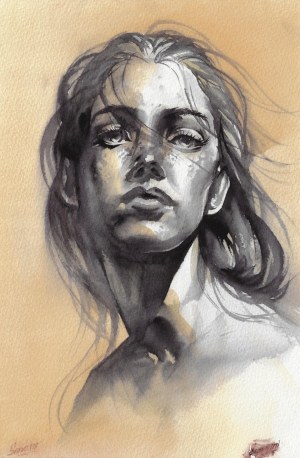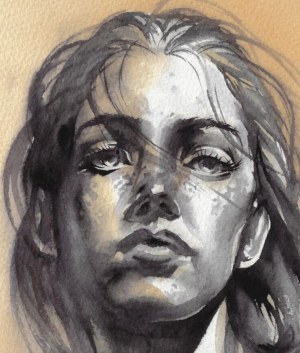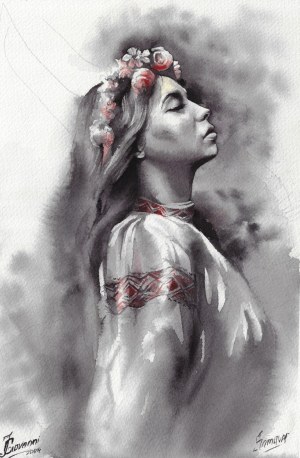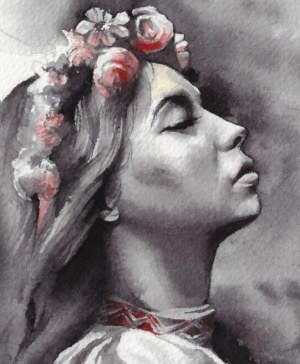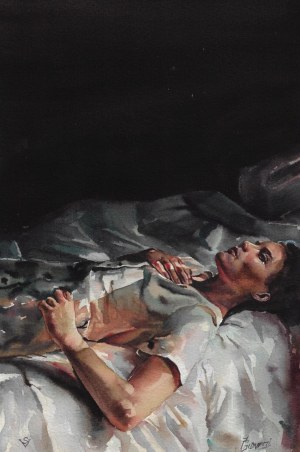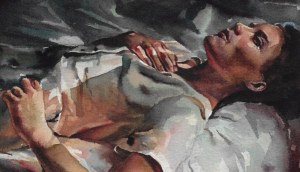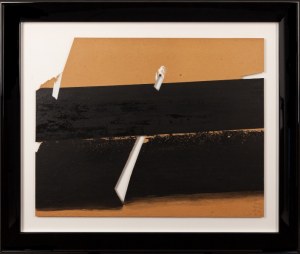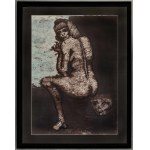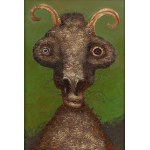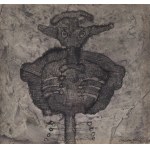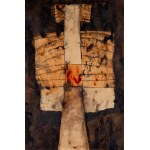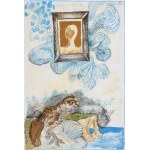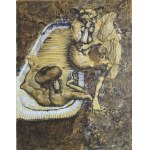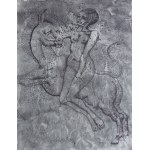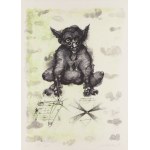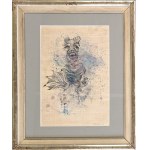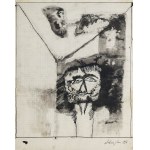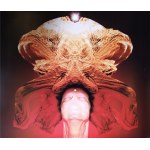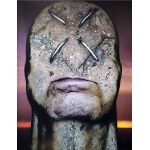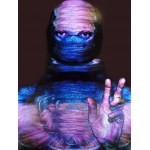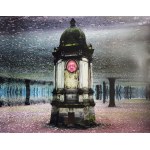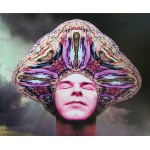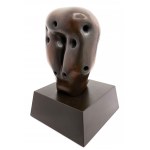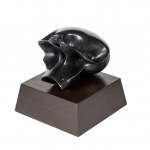50,0 x 99,5 cm - oil, canvas, collage signed p.d.: Lebenstein
on the reverse on the f. signed: Lebenstein | 1964 | "Rhinocéros"
On g. loom inscription: Rhinocéros
on the m. strip inscription: 49. and a sticker: GALLERY AT JESUIT | ASSOCIATION OF POLISH ARTISTS | JAN LEBENSTEIN | EXHIBITION | 16.6.- 5.7.1997 | POZNAŃ
Image described and exhibited:
- Jan Lebenstein, painting, graphics, introduction by Gustaw Herling-Grudzinski, Czeslaw Milosz, Mariusz Rosiak, Gallery at the Jesuits, ZPAP, Poznan 16 June - 5 July 1997, cat. item 14, color illustrations, p. nlb;
- Express Poznański 1997, no. 130;
- Gazeta Poznańska no. 142, Poznań 1997;
- Gazeta Wyborcza no. 143, Poznań 1997.
After the huge international success of the series Figures drawn and Axial Figures
(1956-1960), against all pressure from critics, the artist subjected his previous
painting a complete metamorphosis. There was a transformation of Axial Figures into horizontal structures.
Lebenstein's fascination with the gallery of paleontology at the Jardin
de Plantes in Paris. At the Jardin des Plantes I felt this reality, the reality of the existence of these animals.
I didn't want to imitate or ape this or that ichthyosaur in this next stage, I just
was an actual metaphor for a fossilized world, a world that doesn't exist, a world in which still
in spite of everything, life still smolders to this day. (...) I was concerned with some probability of the
expression of some animal organism that is, as if to say, already crafted, already
macerated, dead, but the element of life in this deadness still with some last "breath" has
stopped. (...) These creatures are frozen in motion, perhaps better to say - in spasm. I now cared
to depict vividly certain situations, which I captured symbolically, presenting
both animals and people in my account. (...) There has actually been a merging of the animal and human worlds here, which I treat symbolically - the juxtaposition serves me to define the situations that exist between people.
Lukasz Kossowski wrote about Lebenstein's bestiary: the beasts take on human characteristics. Confident in their strength and power, they make theatrical gestures of triumph. Their rough-skinned bodies, covered with thick skin, stand still as they run or kneel clumsily as they plunge into the darkness, looking out with their heads raised.
upward for a hint of light. Curled up like embryos, they fall into a blissful, archaic sleep. (...)
Made of dark, earthy matter, born in the impenetrable darkness of the caves, they long for the
light and strive towards it. (Łukasz Kossowski, Jan Lebenstein, Warsaw, 2006, pp. 49-53)
♣ to the price auctioned, in addition to other costs, a fee will be added, resulting from the right of the artist and his heirs to receive remuneration in accordance with the Act of February 4, 1994 - on Copyright and Related Rights (droit de suite)
Jan Lebenstein (Brest Litewski 1930 - Krakow 1999) studied painting at the Academy of Fine Arts in Warsaw from 1948 to 1954 under Prof. Eugeniusz Eibisch and Artur Nacht-Samborski. In 1955 he took part in an exhibition at the Warsaw Arsenal. A friend of Miron Białoszewski during his studies, he showed his first solo exhibition in 1956 at the Tarczynska Theater. In 1959, he won the Grand Prix de la Ville de Paris at the First Biennale of the Young in Paris, and moved to Paris permanently that year. After the series of "drawn figures" (on millimeter paper) and "hieratic figures" from 1955-1958, he paints a series of "axial figures" (1958-1962), which he exhibits in Paris and the USA. At the same time, in 1960, he starts drawing "carnets," a kind of diary, which in the future will provide the motifs used in the paintings. In 1964-1965 he paints "Bestiary," a series of textured, archaic creatures reminiscent of prehistoric excavations. Immediately after, he introduces human and fantastic figures into his paintings, acting out scenes neither mythological nor from a dream, often imbued with eroticism. In 1970, he designs stained glass windows for the Centre du Dialogue in Paris. In 1971 receives French citizenship 1974 creates gouaches inspired by George Orwell's Animal Farm. In 1976-1989 he creates exclusively in gouache and pastel, taking up mythological themes and those taken from the Bible: cycles of illustrations to the Book of Job (published in 1979) and the Apocalypse (published in 1986) in new translations by Czeslaw Milosz. In 1989 he returns to oil painting (series "Pergamon"). The artist received, among others, the Alfred Jurzykowski Foundation Award in 1976, the Warsaw Archdiocese Museum Award in 1985, the Jan Cybis Award in 1987.
Recently viewed
Please log in to see lots list
Favourites
Please log in to see lots list




